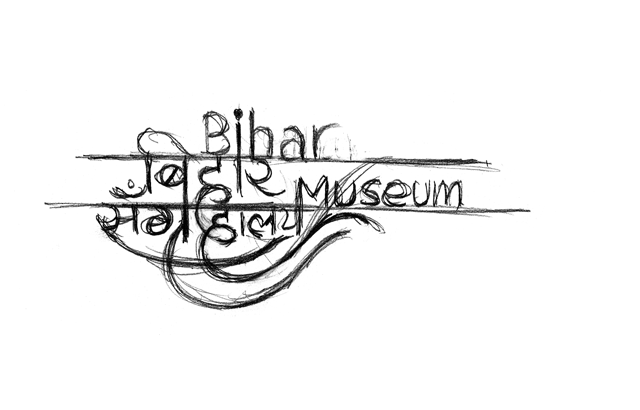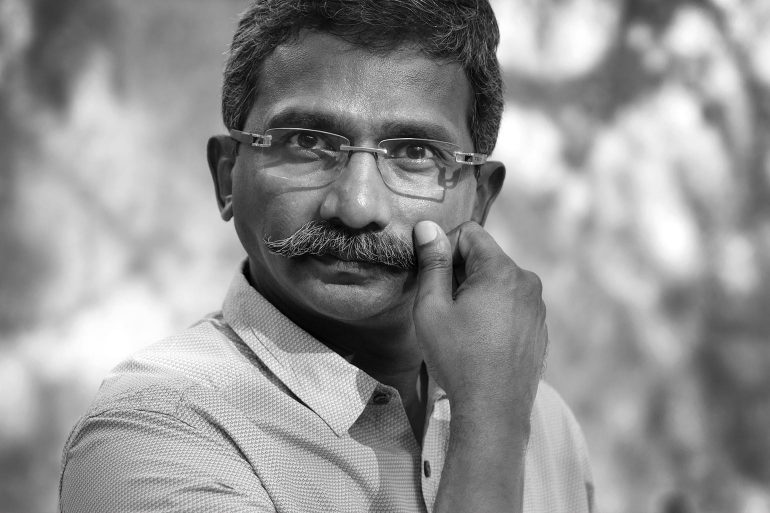Often, as designers, we are prone to lamenting how a certain concept that was brilliant was not accepted by the client or an idea you proposed was squashed by the team. Somewhere, there is this bothersome thought that the solution could have been better, “only if”. And yet, good design is not just about executing an idealistic concept. Designers are not the final decision makers. Whatever we create is put out there for society to test, use and critique. For me, it is all the more important, in the process of creation, to reflect on many aspects of life that can make me a better designer.
In the design of an identity, there is a continuous struggle to produce an entity that is true to the brand. While designing and creating an identity for the Bihar Museum, my aim was to become one with the Museum, in order to truly reflect its character, to surpass any personal choice-making that comes in the way, wanting to decide what is right or best or better. As we progress, solutions emerge beyond what I ever imagine.
It is a tug-of-war between two parties, where it is not really about any one party winning. We are holding on to the same rope, a rope that never gives way, never breaks, letting us find out the stuff that it is made of. And when we find out, it is something truly wonderful – if we have strengthened our resources hard enough. The identity we finally created for the Museum is true to the voice of Bihar, true to history and holds in it the very essence of everything Indian.

A son has that same tug-of-war relationship with his father – there is an urge to be like him and also to prove yourself to him that you can do as good and hopefully better. The father too, wants his son to do well, to shine, simultaneously giving the sense that he has seen so much that the son could not possibly win the game. My father was stubborn in a way, and so was I, and we kept pulling at that rope, both of us feeling it and knowing it. Since my father’s recent passing away, I reflect often on his way of constantly perfecting himself. He is no more and these concerns of who I am, where I am coming from and who I should be have risen up.
Often, even if my father did not have all the resources to do something, he would circumvent the situation to find a way. A passionate drummer, when he could not drum anymore as he aged, he took up playing the violin. He would practice relentlessly every morning, devoting a good many hours to learning. Till he could play the violin, he played, and he would go wherever someone needed an accompaniment in a band with a drummer or saxophonist.
A lot is imbibed in each of us through tradition – the special sweets my parents made for Christmas, every year. My earnest desire is my family should continue making these festive confections, otherwise, with every generation, we lose out on what the past taught us. These are not things that we can take out of a notebook or an Internet post. Traditions come with practice just as playing a violin does.
Malcolm Gladwell notes how all the people who have achieved greatness have practiced their craft for thousands of hours. In his recent article in The New Yorker, Gladwell distinguishes two types of great people: those who mature quickly in life by garnering new achievements and others who mature late, patiently doing things over and over. Becoming one with the instrument is central to our craft. And yet, there is a sense of my own presence, something of myself which gets embedded into the design. Continually, during a project, I give it all my effort and there is no holding back. It is essential, therefore, that I process my own understanding to such a degree that the finest output is rendered.
Throughout the period we were designing for the Museum, I was beset with the idea of my roots. It was important for me to connect with the identity as an Indian. But who is this Indian? Is he a mish-mash of cultures, speaking several languages, creating subcontextual tones in every region? What binds us? In our studio, the Bodhi Tree loomed large as an icon of Bihar, connecting to Buddhism, the state symbol, the peepul – almost too obvious. Despite all efforts to steer clear of the tree, it stayed firm. All the while, I was exploring the ‘shiro-rekha’ the line that is unique to the Devanagari script. The logotype of the Museum grew with the Hindi version of the name supporting the English, as a bilingual bridge connected by the shiro-rekha.
The script of a country holds its geography, history and its presence in such a distinguished way. Design is a reflection of society and the times we live in. The evolution of the Bihar Museum logo is a reminder of how Indian symbols are complex and multilayered. It is a reminder that we never need to compromise in design, we simply need to have the tug-of-war. No question – the solution is always greater than the sum of all parts.
Anthony Lopez is the Principal and founder at Lopez Design, a brand identity and communications design firm in Delhi. His cross-disciplinary work has led to nuanced solution by merging specialties and inviting collaborative efforts. A keen and empathetic social observer, Lopez finds inspiration for design by responding to human needs.
A version of this article was published in Kyoorius 26.
**

